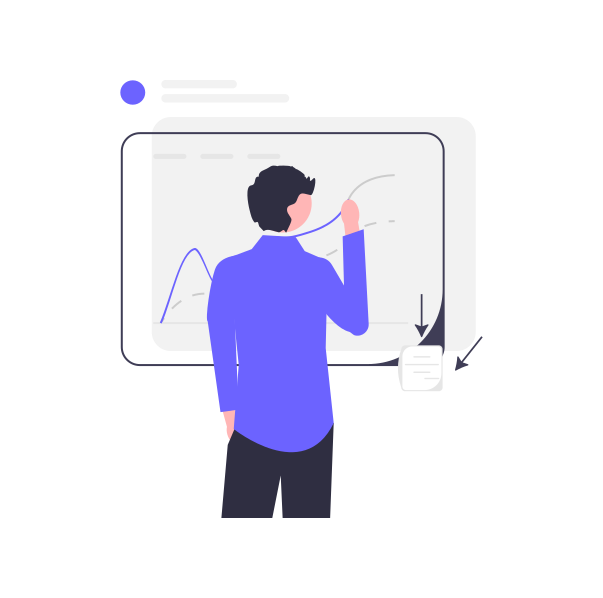Effective customer segmentation is crucial for any B2B business aiming to deliver personalized marketing and sales efforts. However, achieving successful segmentation is fraught with challenges. In this blog, we'll delve into some of the common obstacles faced in B2B customer segmentation and provide practical strategies to overcome them.
1. Data Quality and Availability
Challenge:
One of the primary challenges in B2B customer segmentation is ensuring the quality and availability of data. B2B data often comes from multiple sources, such as CRM systems, social media, and transactional records, leading to inconsistencies and inaccuracies.
Solution:
To overcome this challenge, businesses should implement a robust data management strategy. This includes:
- Regular Data Audits: Conduct frequent audits to identify and rectify inaccuracies, duplicates, and outdated information.
- Data Enrichment: Use data enrichment tools to supplement and enhance existing data, ensuring it is comprehensive and current.
- Centralized Data Repository: Establish a centralized data repository to consolidate information from various sources, ensuring consistency and accessibility.
2. Complex Buyer Journeys
Challenge:
B2B buyer journeys are often complex, involving multiple stakeholders and decision-makers. This complexity makes it difficult to segment customers accurately based on their journey stages and roles.
Solution:
Adopt a multi-dimensional segmentation approach that considers various factors, such as:
- Role-Based Segmentation: Segment customers based on their roles within the buying process (e.g., decision-makers, influencers, end-users).
- Behavioral Segmentation: Analyze and segment customers based on their interactions and behaviors at different stages of the buyer journey.
- Lifecycle Segmentation: Create segments based on the customer lifecycle stages (e.g., awareness, consideration, decision, retention).
3. Dynamic Market Conditions
Challenge:
The B2B market landscape is continually evolving, with changes in industry trends, economic conditions, and technological advancements. These dynamic conditions can render existing customer segments obsolete.
Solution:
Implement a flexible and adaptive segmentation strategy:
- Regular Reviews: Conduct regular reviews of segmentation criteria to ensure they remain relevant and effective.
- Market Monitoring: Stay abreast of market trends and changes, adjusting segmentation strategies accordingly.
- Agile Segmentation Models: Use agile segmentation models that can be easily adjusted in response to market dynamics.
4. Integration with Marketing and Sales
Challenge:
Another common challenge is the lack of integration between segmentation efforts and marketing and sales activities. Without proper alignment, segmentation insights may not be effectively utilized in targeting and engagement strategies.
Solution:
Foster strong alignment between segmentation and operational teams:
- Cross-Functional Collaboration: Encourage collaboration between data analysts, marketers, and sales teams to ensure segmentation insights are actionable and integrated into campaigns.
- Unified Platforms: Use unified marketing automation and CRM platforms to seamlessly integrate segmentation data with marketing and sales workflows.
- Feedback Loops: Establish feedback loops where marketing and sales teams provide insights on the effectiveness of segments, enabling continuous improvement.
5. Over-Segmentation and Resource Allocation
Challenge:
While segmentation aims to create precise target groups, over-segmentation can lead to an excessive number of small segments, straining resources and complicating execution.
Solution:
Strike a balance between precision and practicality:
- Prioritize Key Segments: Identify and prioritize segments that offer the highest value or potential impact.
- Resource Assessment: Evaluate the resources required to effectively target each segment and adjust the segmentation granularity accordingly.
- Scalability Considerations: Ensure that segmentation strategies are scalable and can be managed efficiently without overwhelming available resources.
6. Measurement and Optimization
Challenge:
Measuring the effectiveness of segmentation strategies and optimizing them for better results is a significant challenge. Without proper metrics and analysis, it is difficult to gauge the success of segmentation efforts.
Solution:
Implement a robust measurement and optimization framework:
- Define Clear Metrics: Establish clear, quantifiable metrics to measure the success of segmentation strategies (e.g., conversion rates, engagement levels, sales growth).
- Continuous Testing: Regularly test and refine segmentation criteria based on performance data and insights.
- Advanced Analytics: Utilize advanced analytics tools to gain deeper insights into segment performance and identify areas for optimization.
Conclusion
B2B customer segmentation is a powerful tool for enhancing marketing and sales effectiveness, but it comes with its set of challenges. By addressing issues related to data quality, buyer journey complexity, market dynamics, integration, resource allocation, and measurement, businesses can develop a more effective and adaptable segmentation strategy. This will ultimately lead to more targeted and impactful marketing efforts, driving greater business success.


